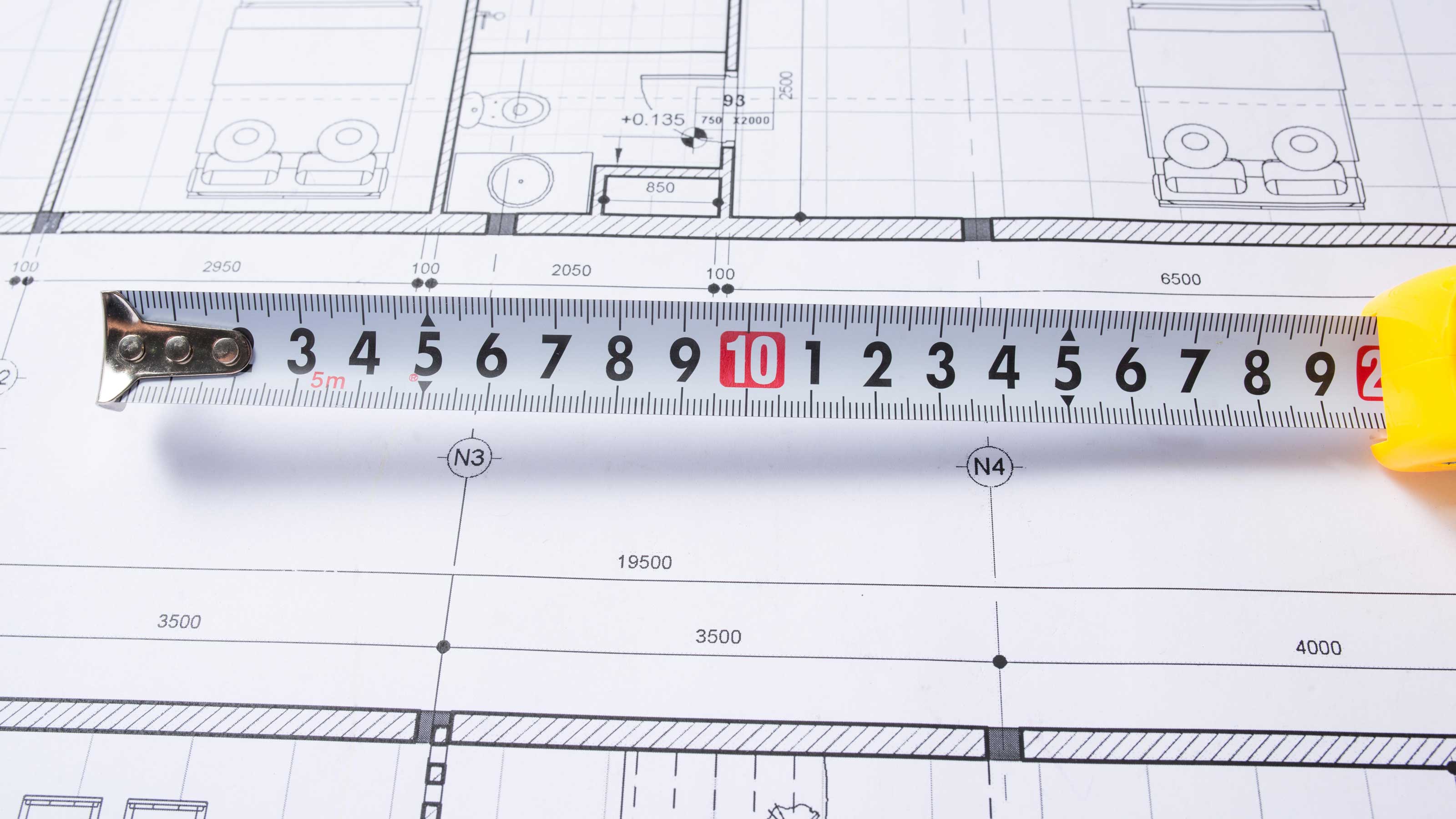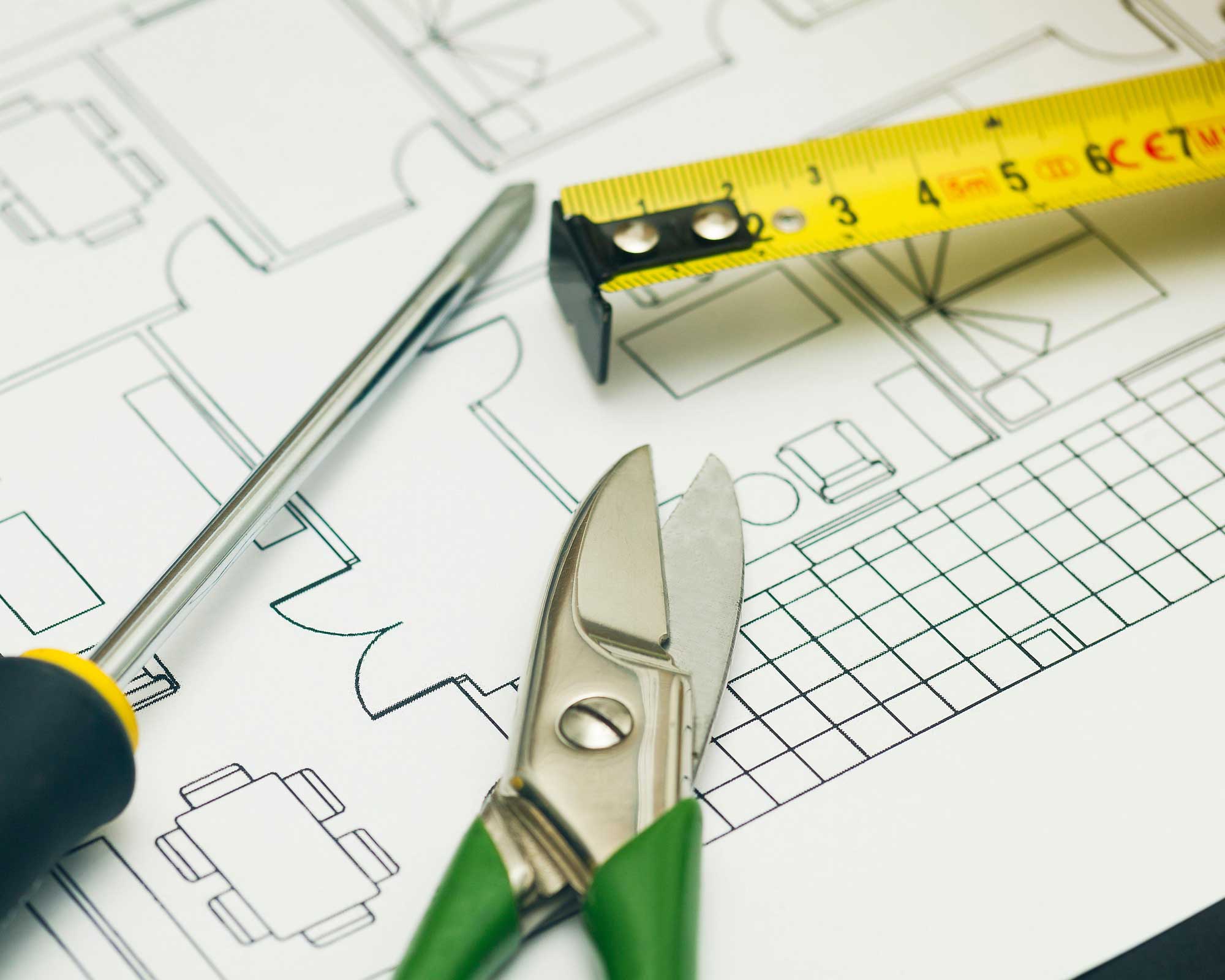What are the black diamonds on a tape measure for?
Here are some key tape measuring tips for your next home improvement project


Measuring tapes are incredibly useful devices. Whether you are installing new shelves or measuring for new wallpaper, measuring tapes make these tasks a lot easier.
With multiple markings and measurements, it is important to know how to read a measuring tape for the right task. An incorrect reading can result in inaccuracies from the start of a project and lead to a waste of material and time rectifying things later on.
As for those black diamond markings along the side of your tape measure, they have a specific purpose. Tape measures not only ‘measure’ but have additional functions too. Our experts have also shared some of their other tape-measuring tips to aid you in your future DIY projects.
What are the black diamonds on a tape measure for?
Find out what they are used in addition to other measuring hacks these devices can be used for.

Black diamonds
Home improvement expert Austin Fain states that the black diamonds or black triangles you see on a tape measure are typically used to mark the center of a measurement.
They provide a quick reference point for finding the midpoint of a length without having to do the math manually.
In most standard tape measures, you will find a series of markings that include black diamonds or triangles. Here's a common arrangement:
Design expertise in your inbox – from inspiring decorating ideas and beautiful celebrity homes to practical gardening advice and shopping round-ups.
1. Red numbers: These represent the whole inches. For example, 1, 2, 3, etc.
2. Black numbers: These represent half-inch increments. For example, 1/2, 1 1/2, 2 1/2, etc.
3. Black diamonds or triangles: These are located between the red and black numbers and are used to indicate quarter-inch (1/4) increments. They help you quickly identify the midpoint between the whole inches and half-inches.
For precise measurements, you can use these markings to identify the center point of a length. For example, if you want to find the center of a 5-inch length, you can measure to the 5-inch mark, then look for the black diamond between the 5-inch mark and the 6-inch mark to identify the exact center point, which would be 5 1/4 inches. This feature is particularly useful in various DIY projects or even home design tasks such as measuring for curtains.

Austin Fain is the owner of Perfect Steel Solutions and works in the Home Improvement industry across the U.S.
Tape measuring tips
1. Use ‘true zero’ for accurate measuring
‘The metal bit at the beginning of the tape measure allows you to achieve a more accurate measurement,' says tiny home specialist Erica Fecundo. ‘The metal tip provides "true zero" meaning the tape measure has been calibrated to exactly zero inches.’
You can see that the first inch on the tape measure is 1/16 of an inch short, which is the same size as the metal tip.
If you are measuring the outer side for a surface or piece of furniture you can remove the metal tip out of the way revealing the tape underneath, ensuring accurate measurements each time.

Erica Fecundo, an interior design expert specializing in furniture selection and arrangement.
2. Use the hook to hold the tape measure in place
You may have noticed the metal hook at the end of the tape measure but not know exactly what is called or its purpose. The hook is known as a ‘blade stop,’ and its primary use is to hold the blade in place when the tape measure is not being used.
This blade stop comes in handy when trying to measure places out of reach, such as the top of a high cabinet or installing curtain rods.
3. Use the tape measure to grab onto nails
One common feature on tape measures is a small slot on the end of the hook. This handy gap is there so you can use the tape measure to grab onto the end of a screw or nail.
With the tape measure holding onto the end of a screw, that leaves one hand free for measuring, especially when trying to measure on a flat surface. Simply use a hammer to hit the nail or screw into place and you can hook the tape measure onto it allowing you to take the measurement clearly and with greater accuracy.
4. Use the tape measure as a scribing tool
Another surprising feature tape measures have is a serrated edge at the end. Many of you may have never noticed its presence and now you’re left wondering what it’s used for.
According to home remodeling expert Thomas Borcherding the serrated edge has a very particular use. ‘If you’re measuring something and do not have a marking tool with you,’ he says, ‘you can use the serrated edge of the measuring tape to make a mark on where you need to.’
The teeth along the serrated edge will help grip the material and leave a mark when running across the surface back and forth and provide you with an accurate measurement.

Thomas Borcherding is a NKBA-Certified Kitchen & Bath Designer with decades of residential remodeling experience.
FAQs
Why are tape measures yellow?
Tape measures are often yellow due to their markings. Measuring tapes often have black and red measurements on them and the yellow background is the optimal color combination for reading.
The black diamonds on the tape measure provide quick and convenient references for common structural elements, as well as aid in precise measurements for various measuring and DIY projects. We like the Craftsman 25 foot tape measure from Amazon.
So the next time you see those diamonds, you'll know they're not just for decoration; they're there to make your job easier and more accurate.

Seraphina is a contributing editor at Homes & Gardens, writing Solved features on organizing and storage. She loves to decorate and also grow her own produce from her home in London. Her previous experience includes working at Women's Health and Fabulous Magazine.